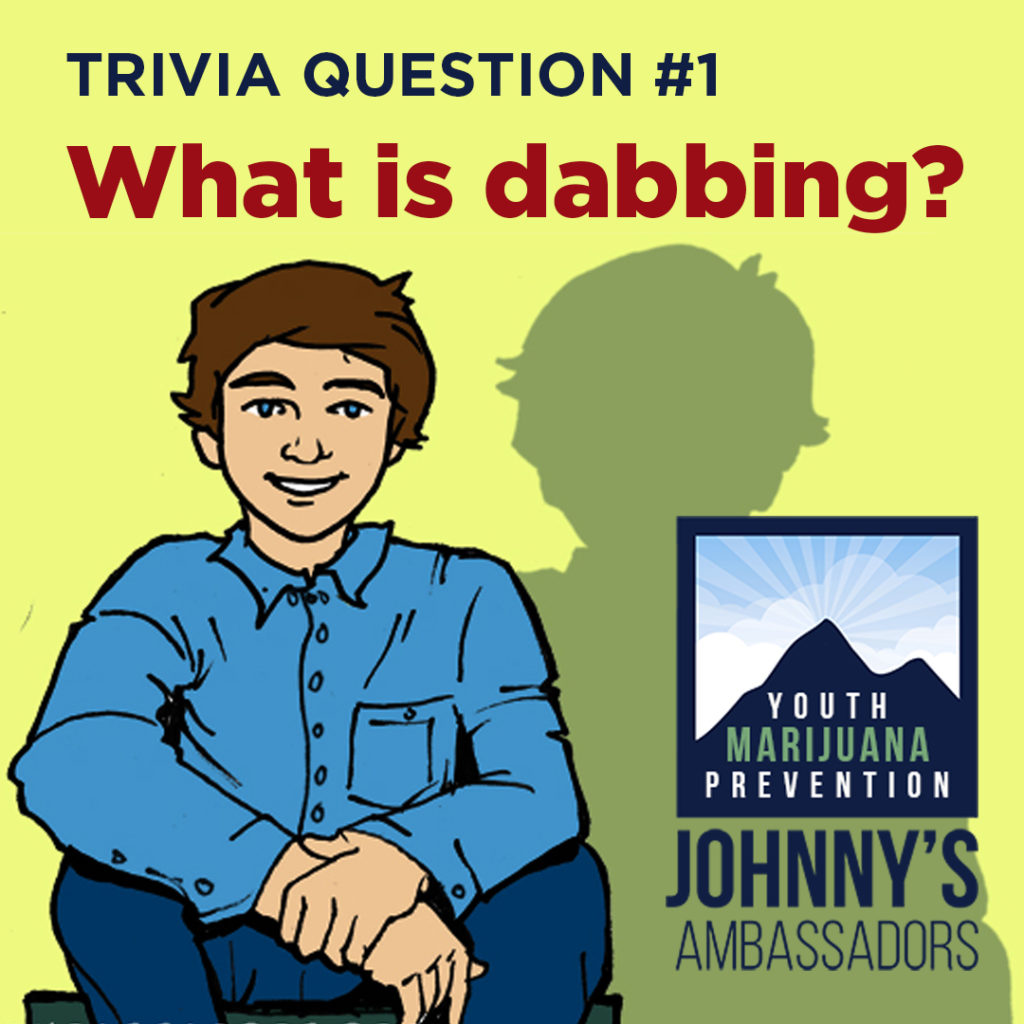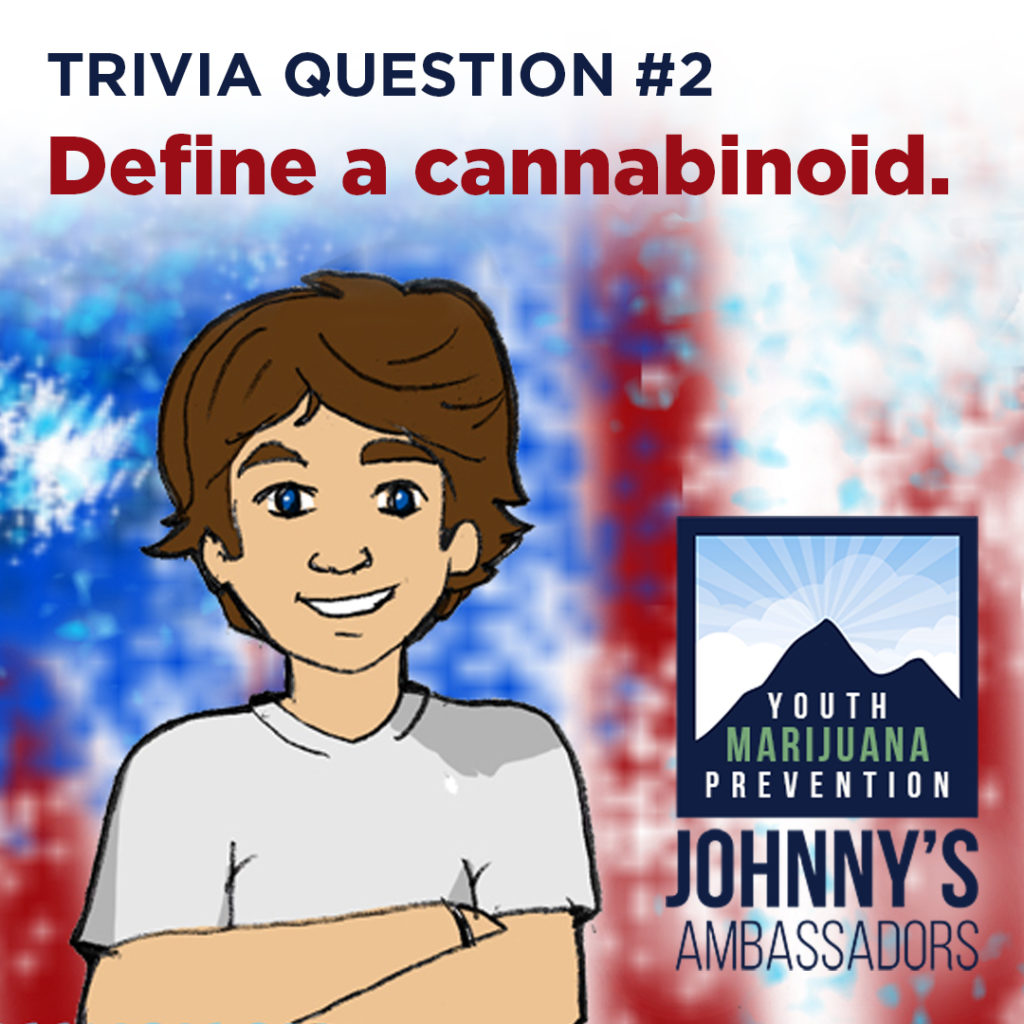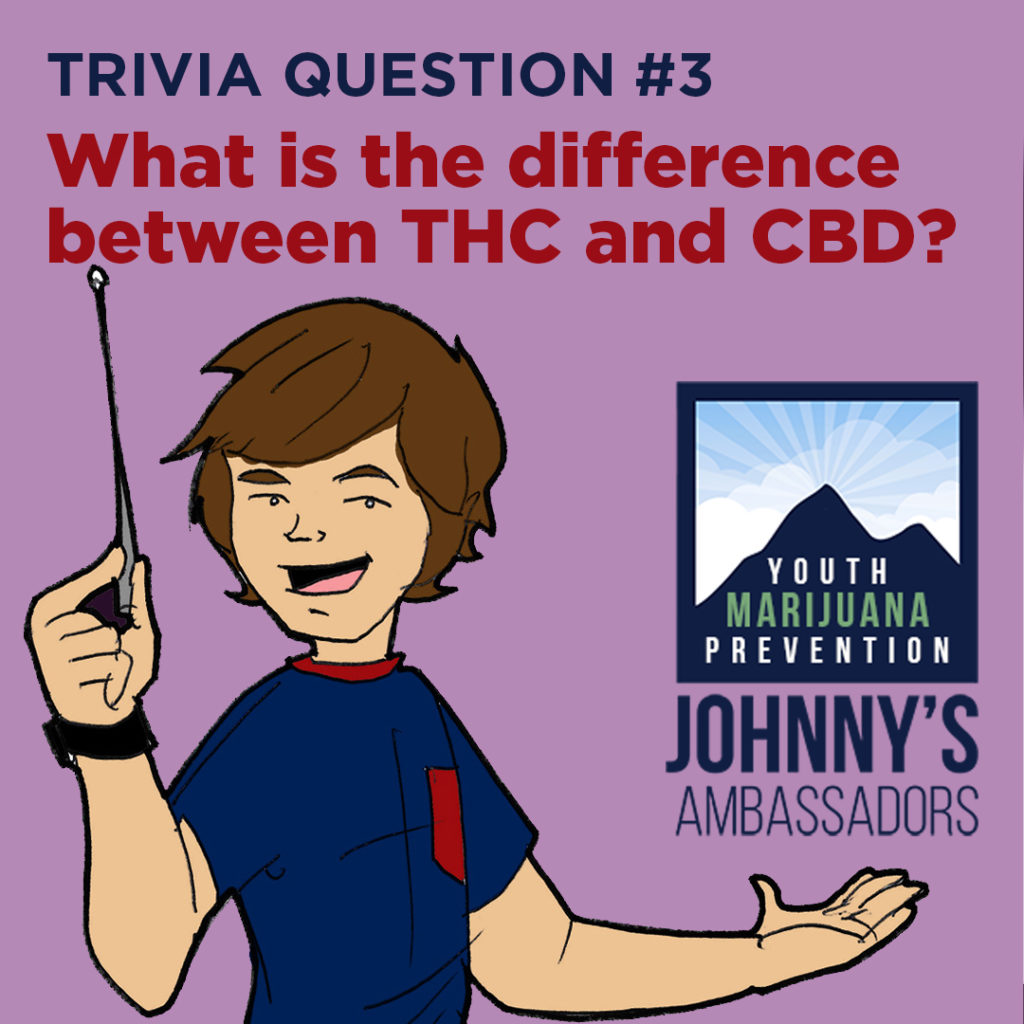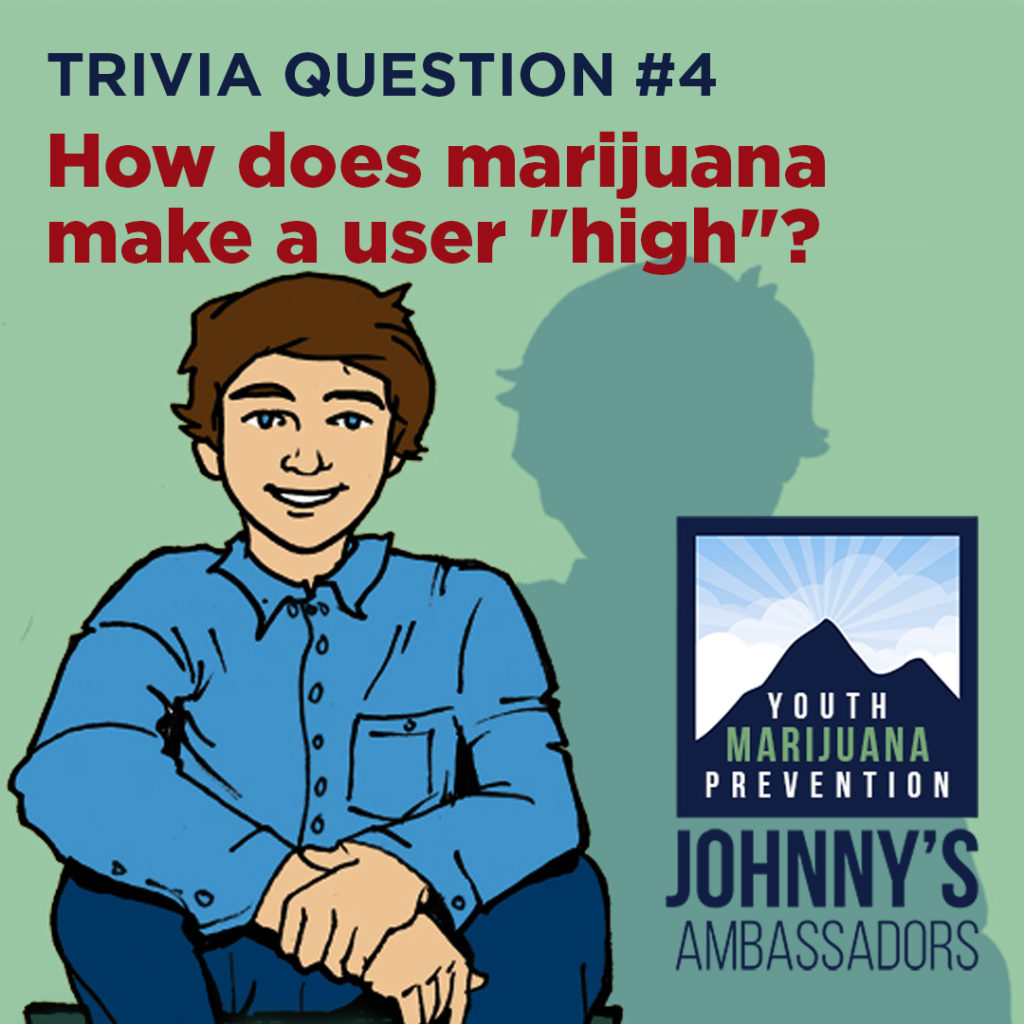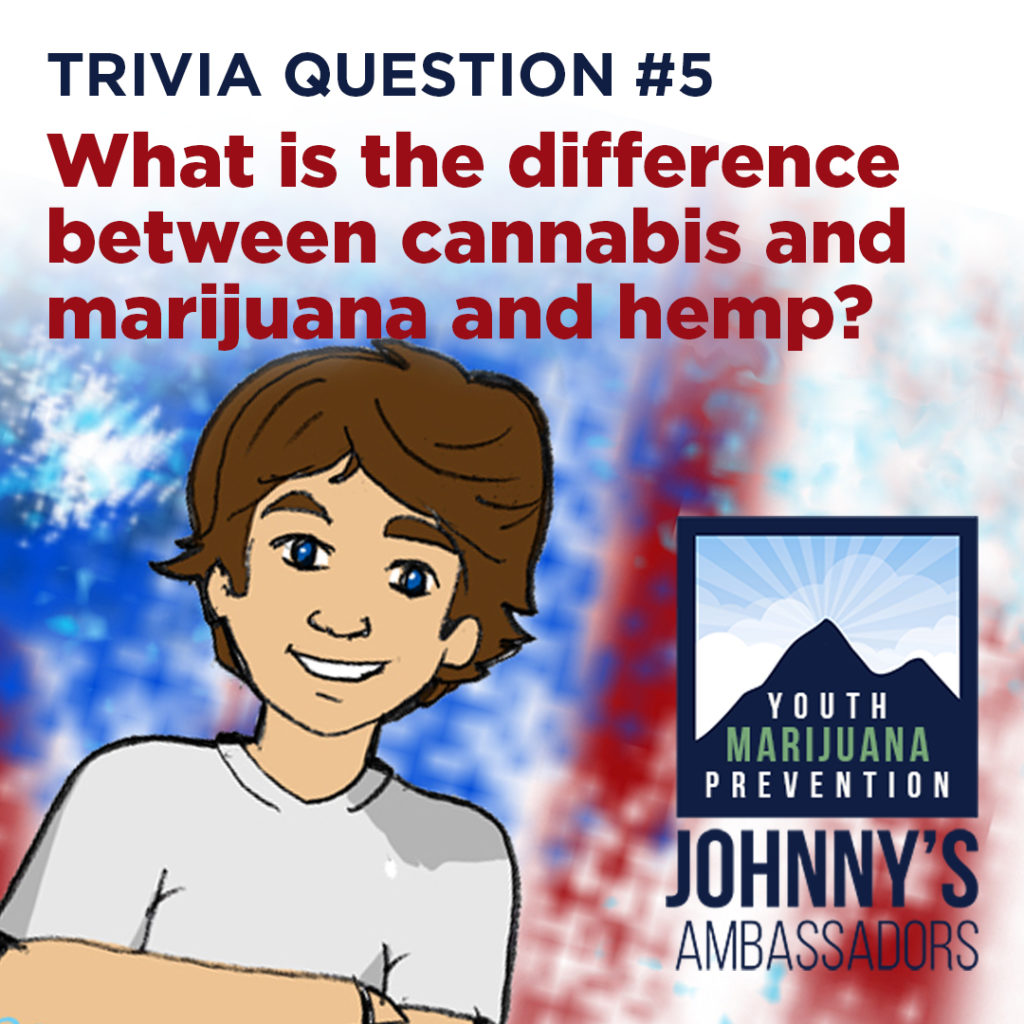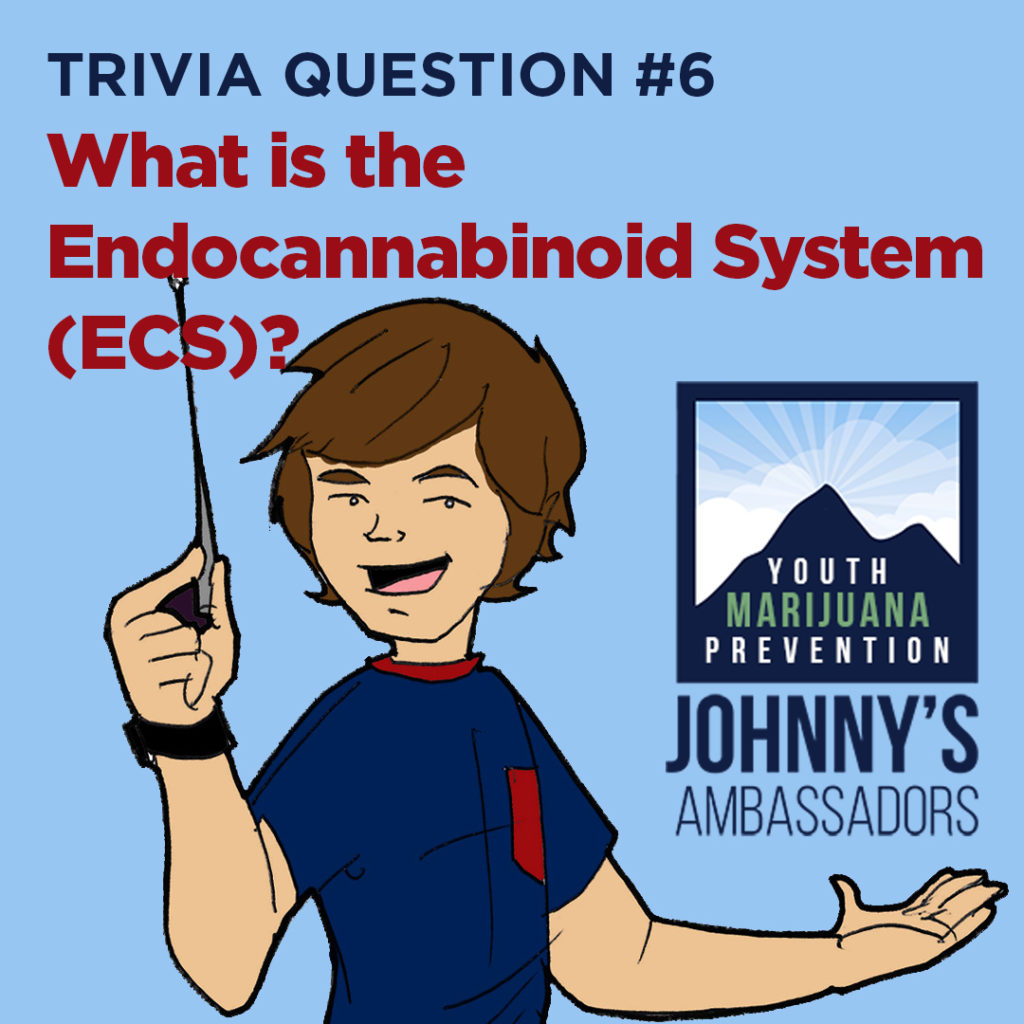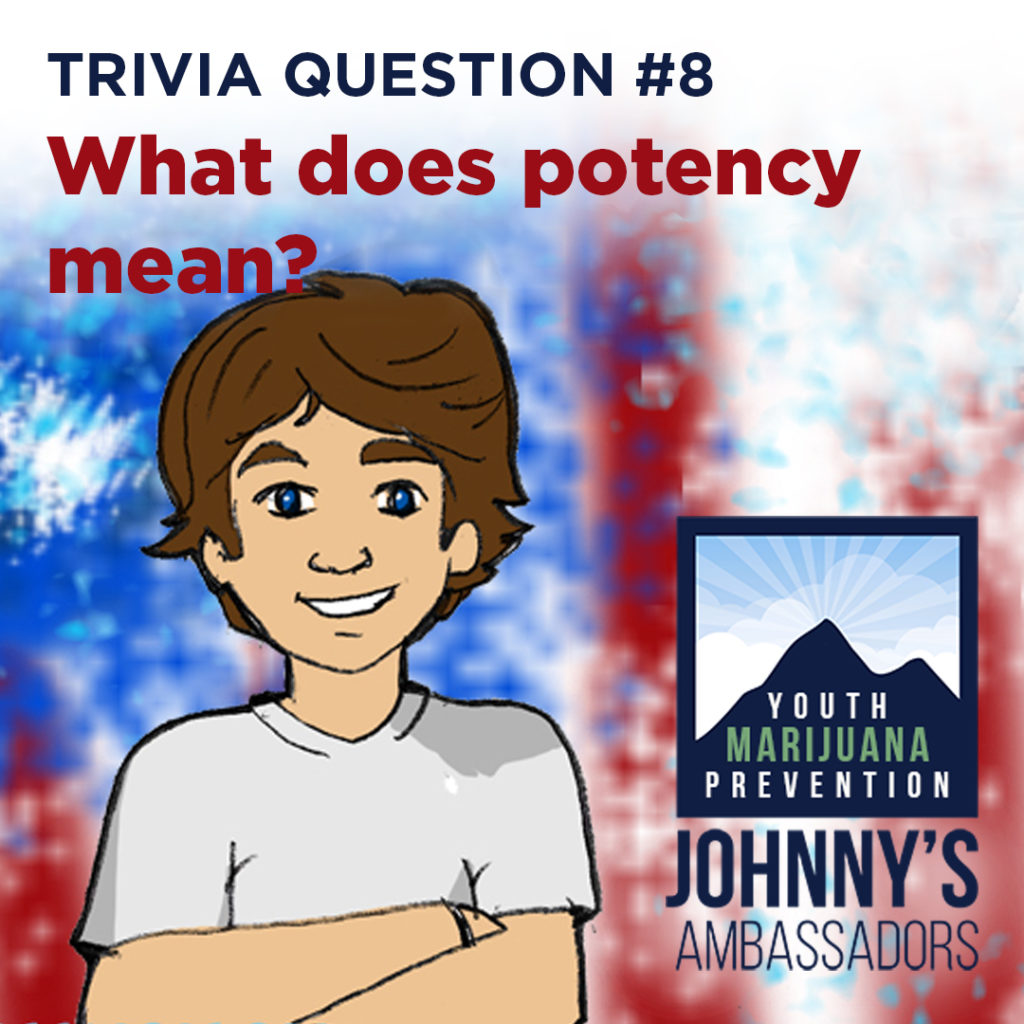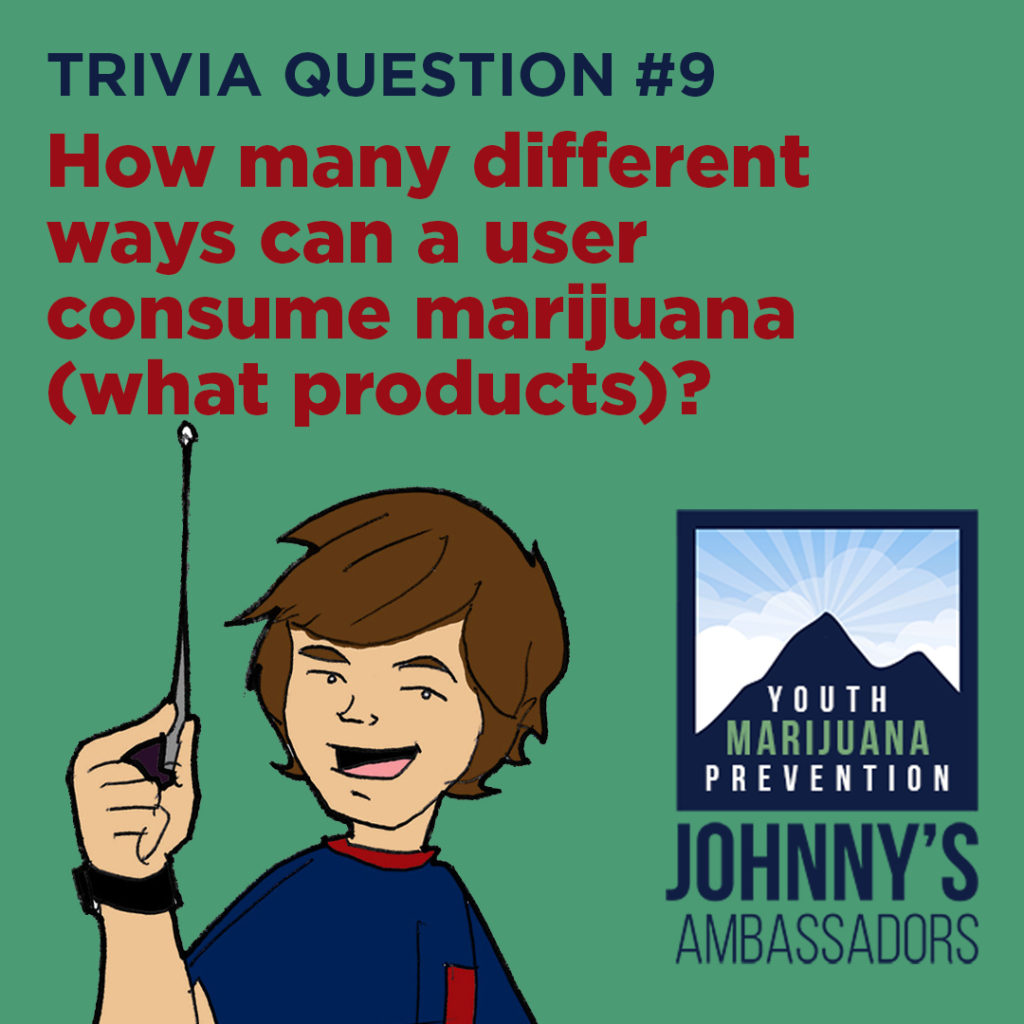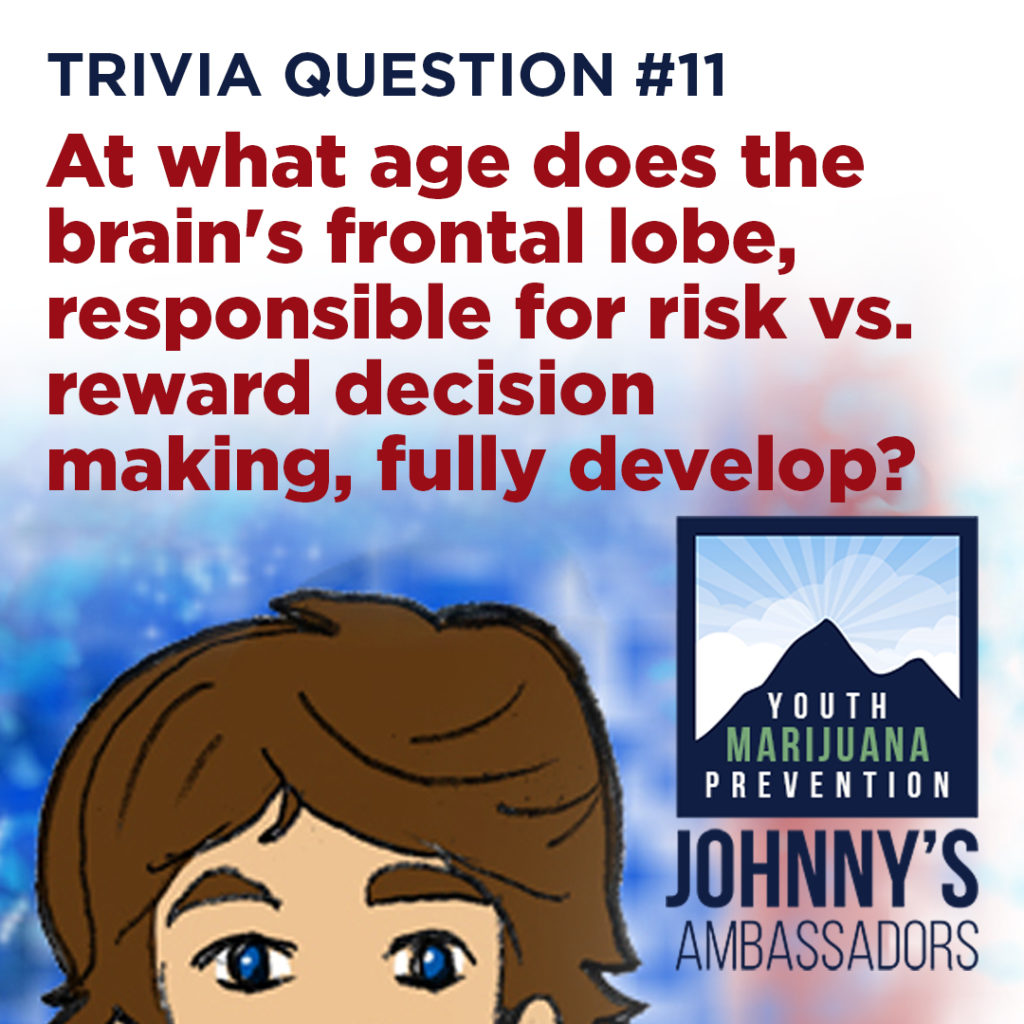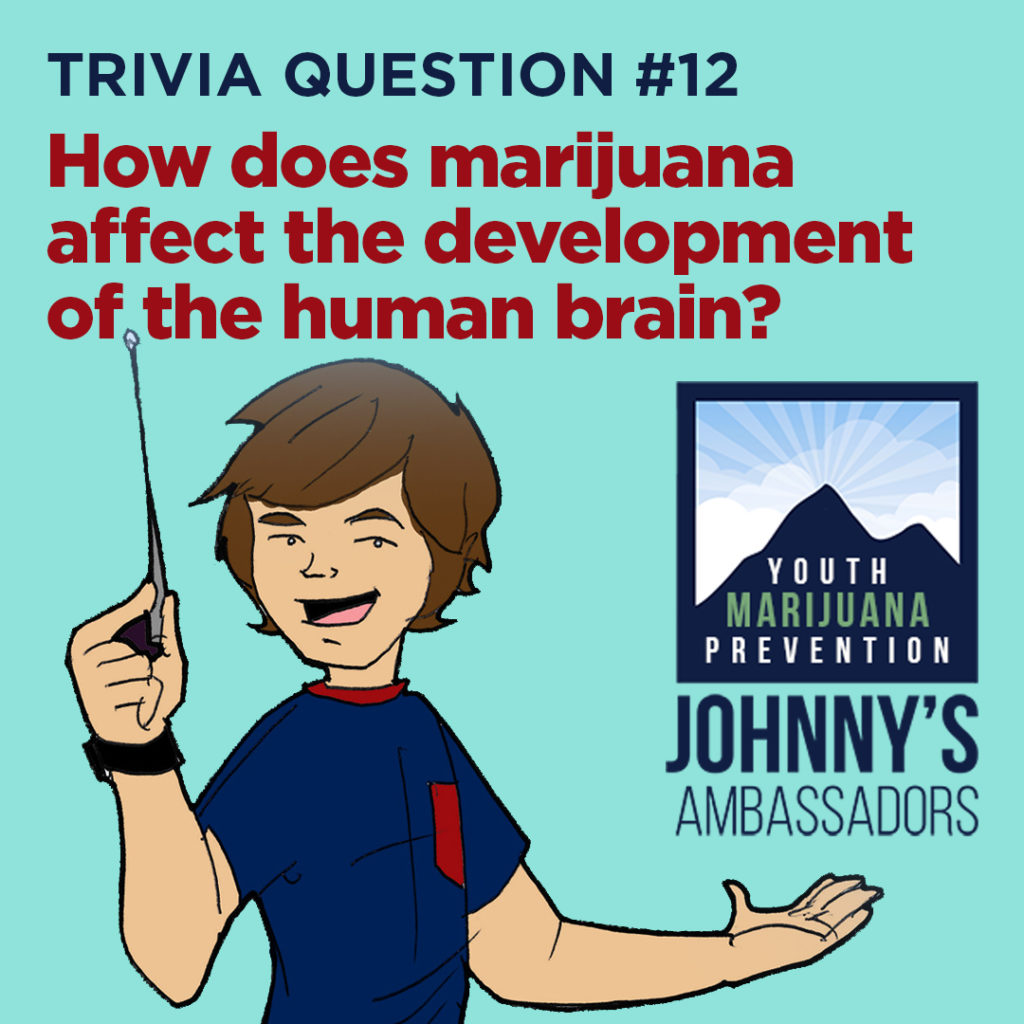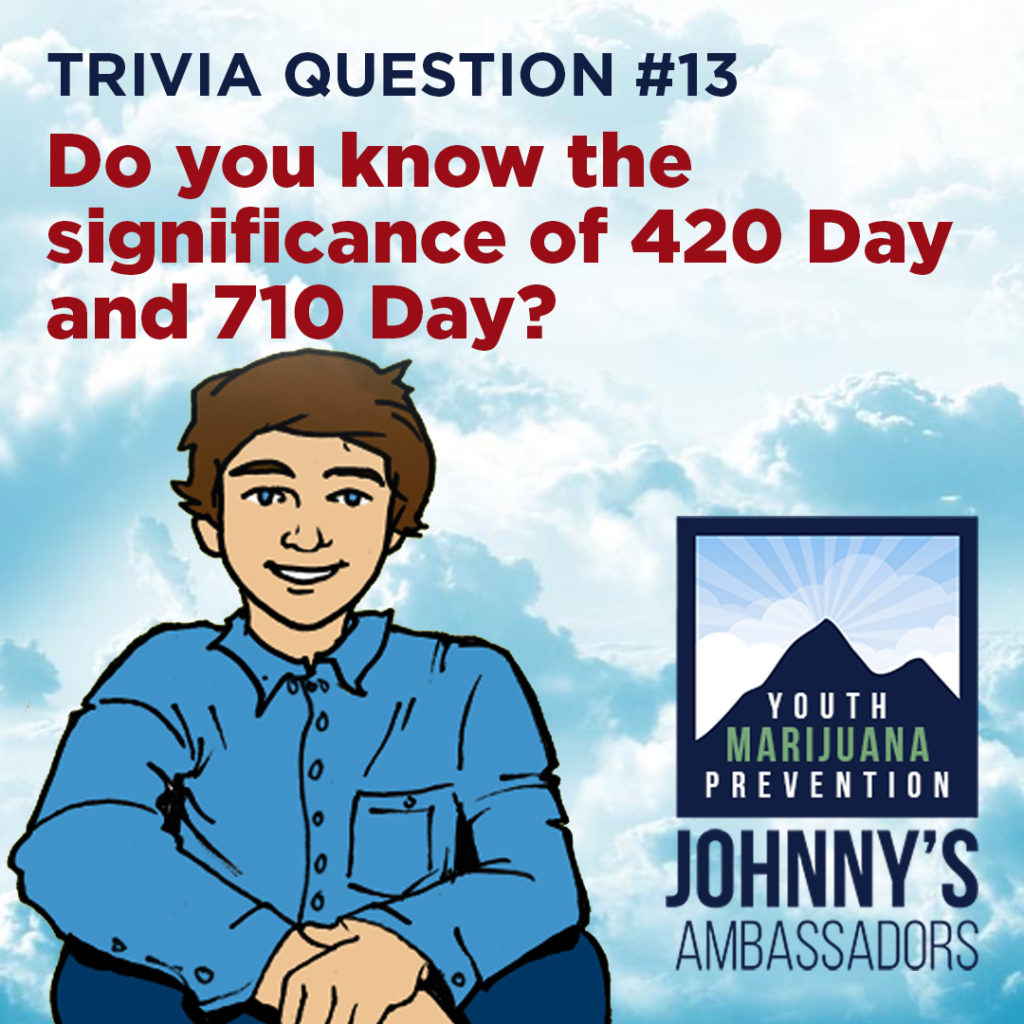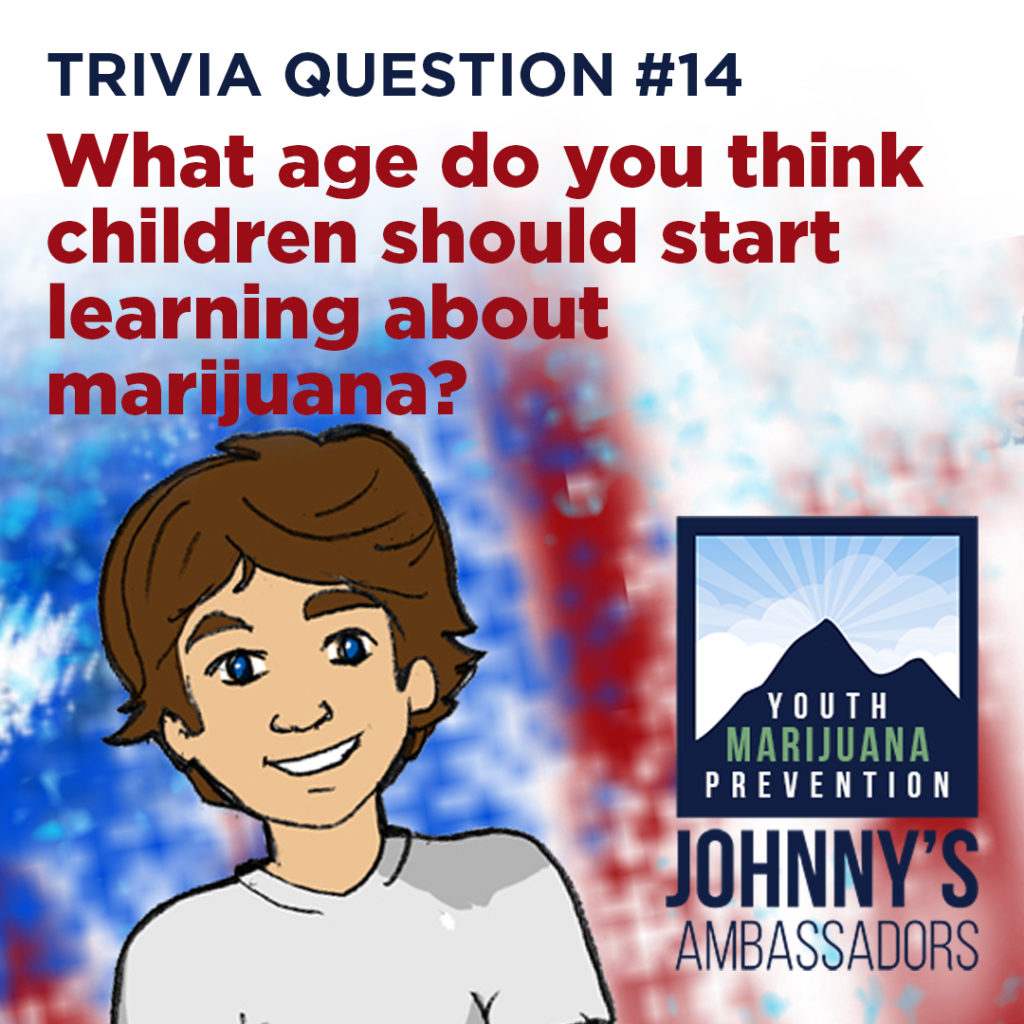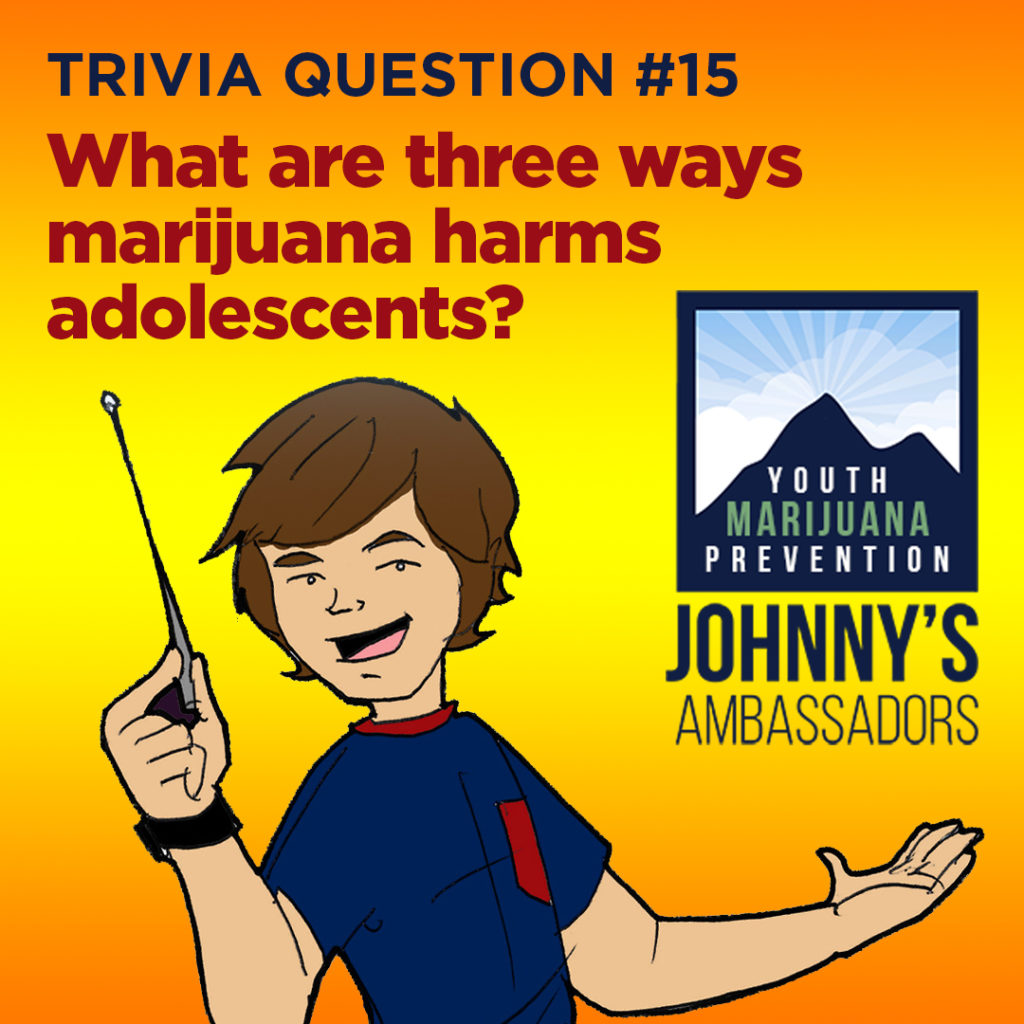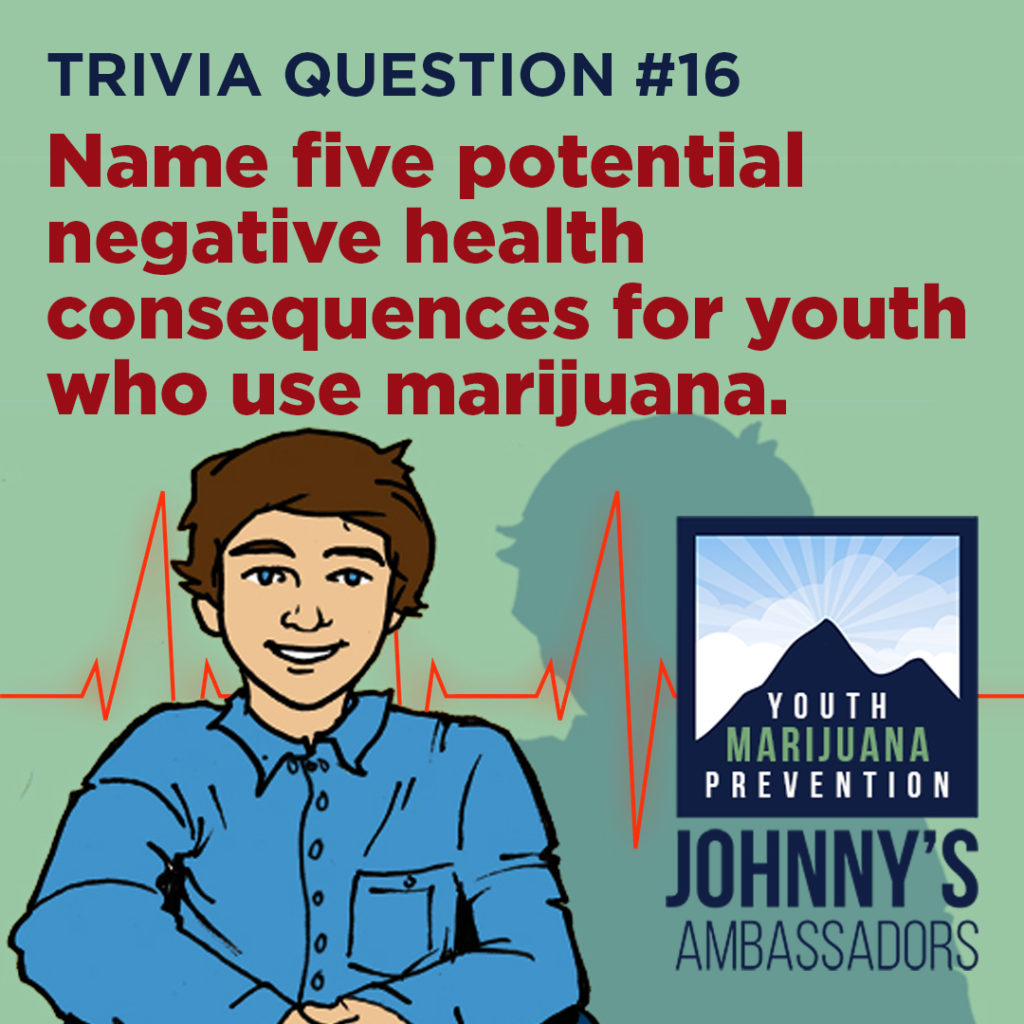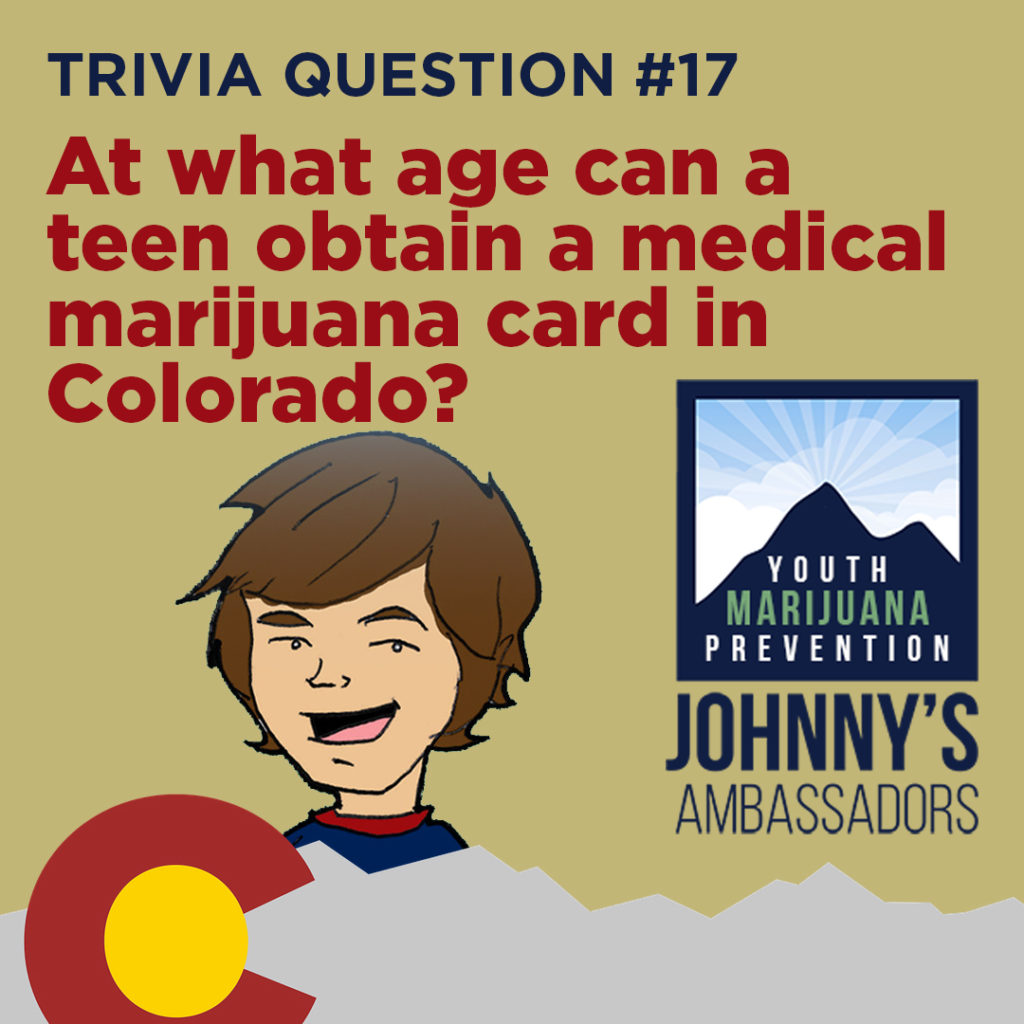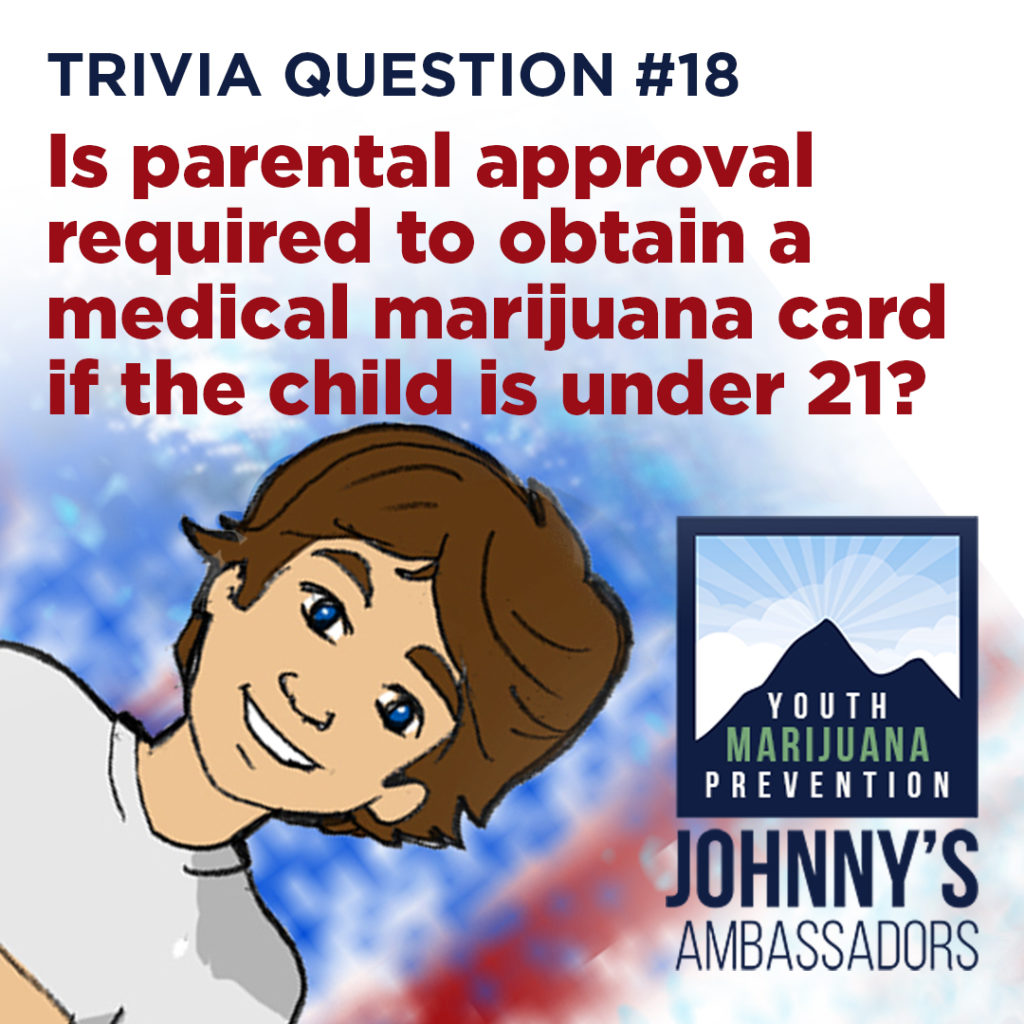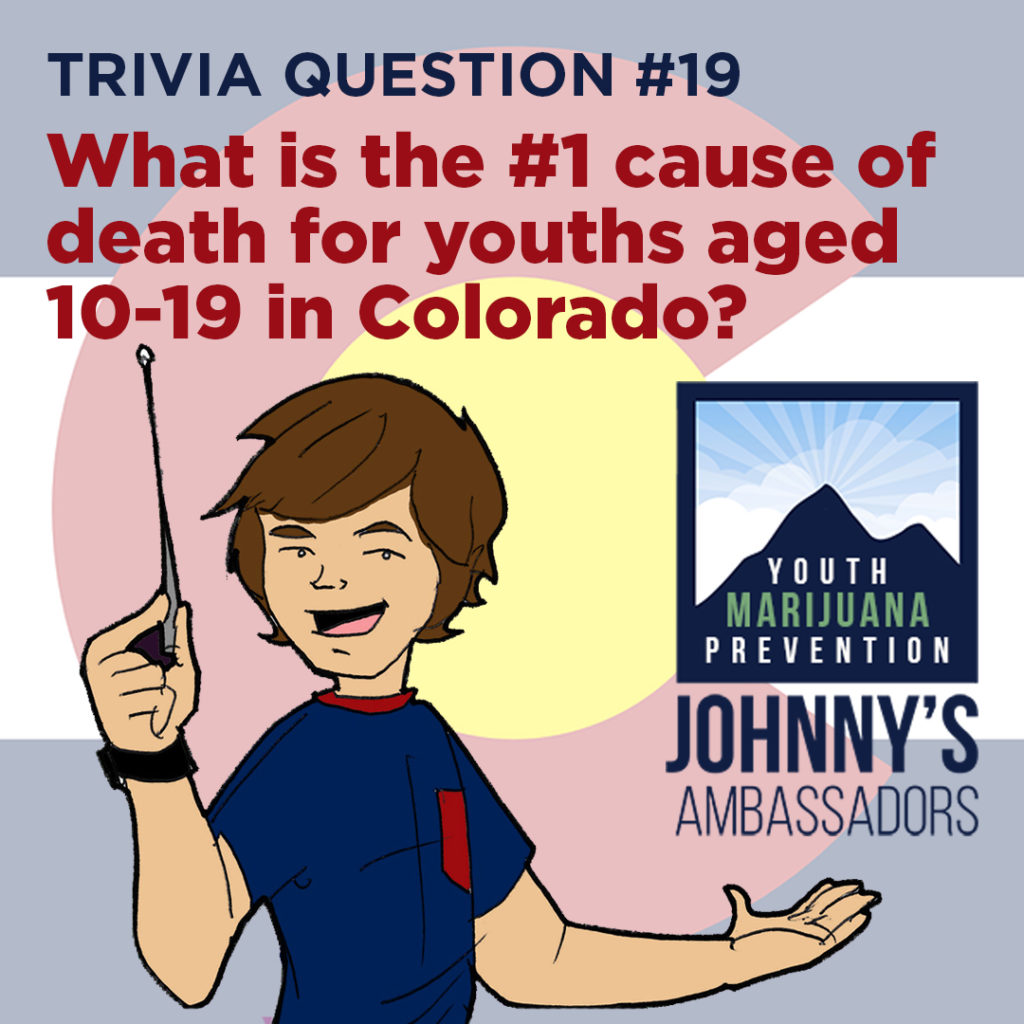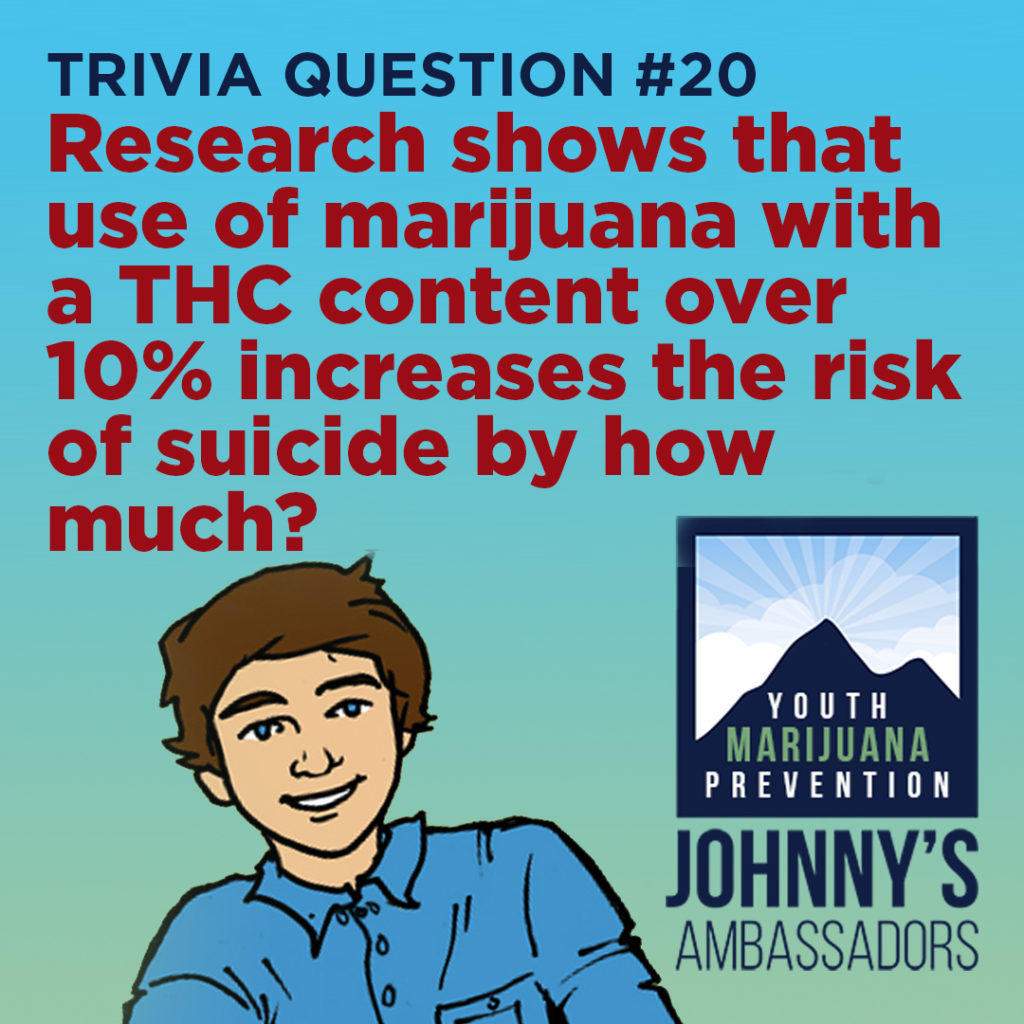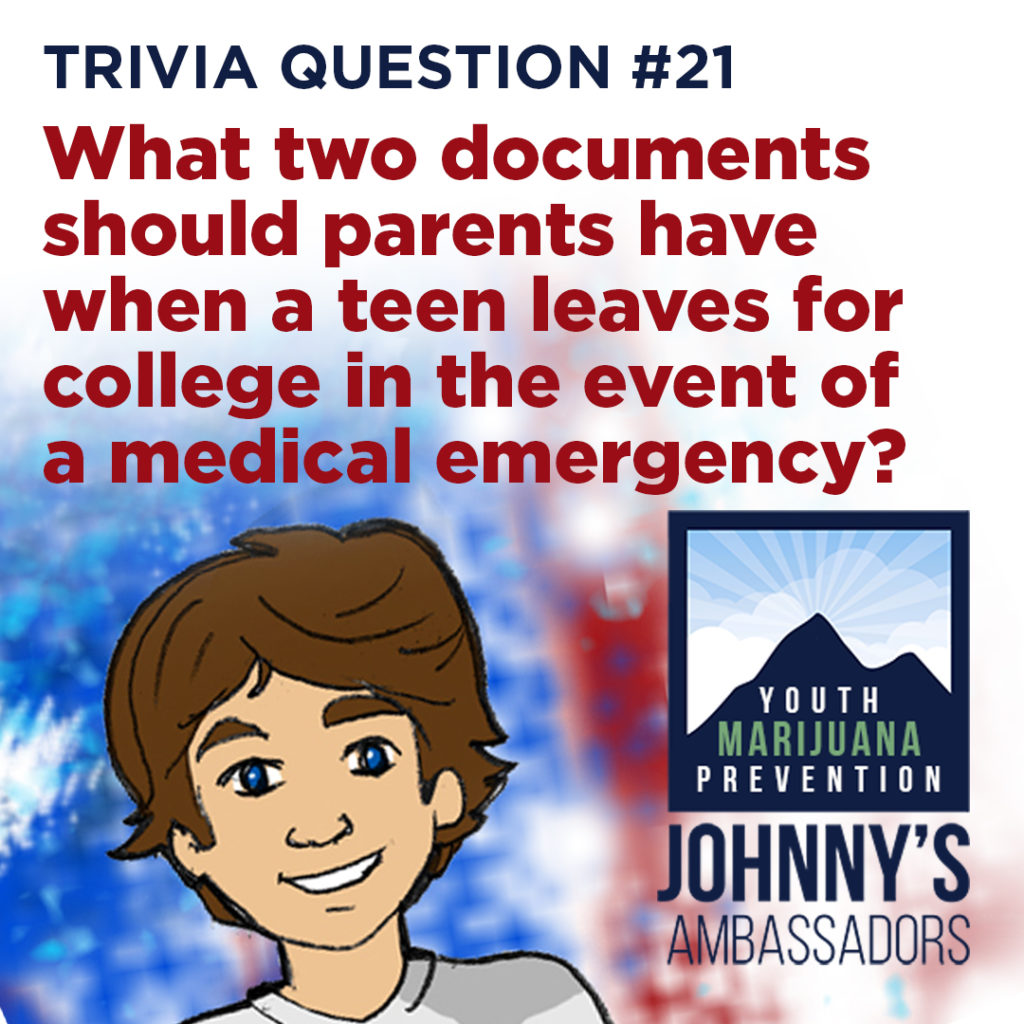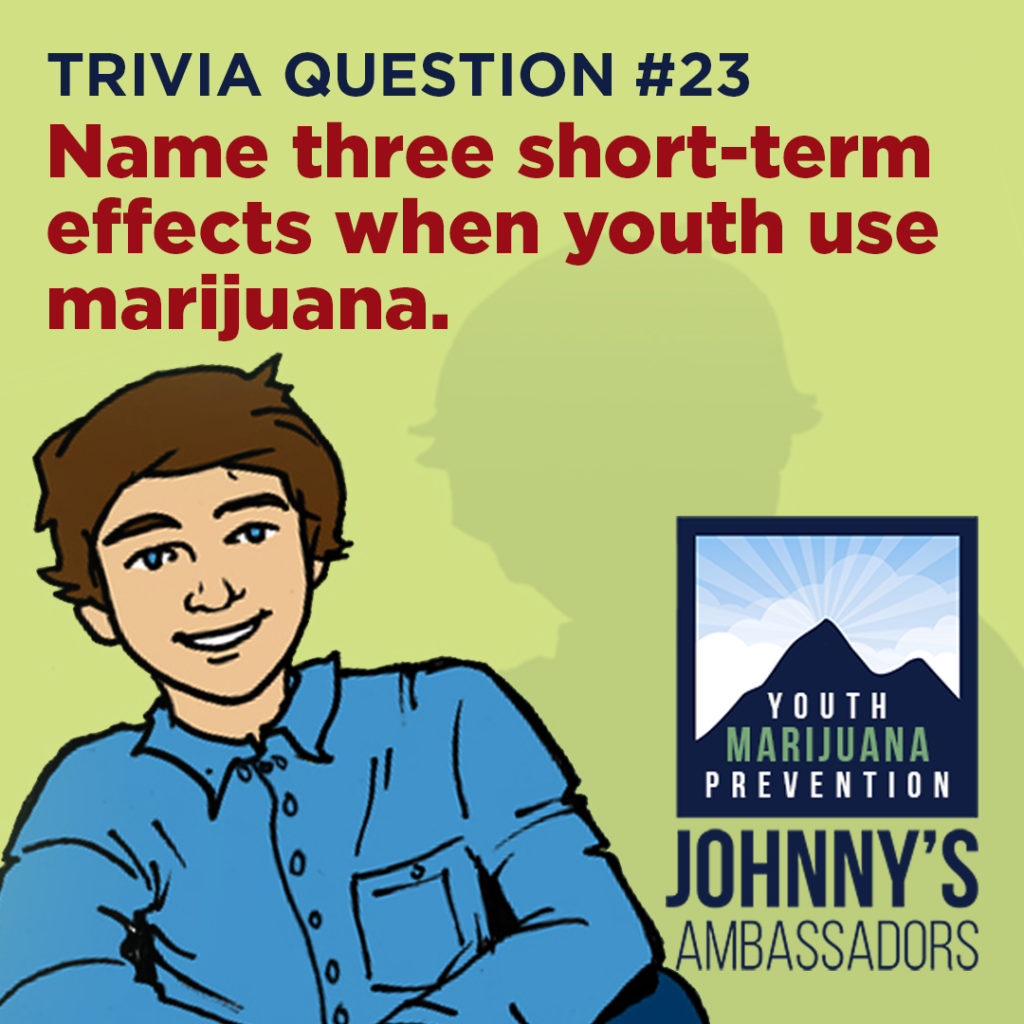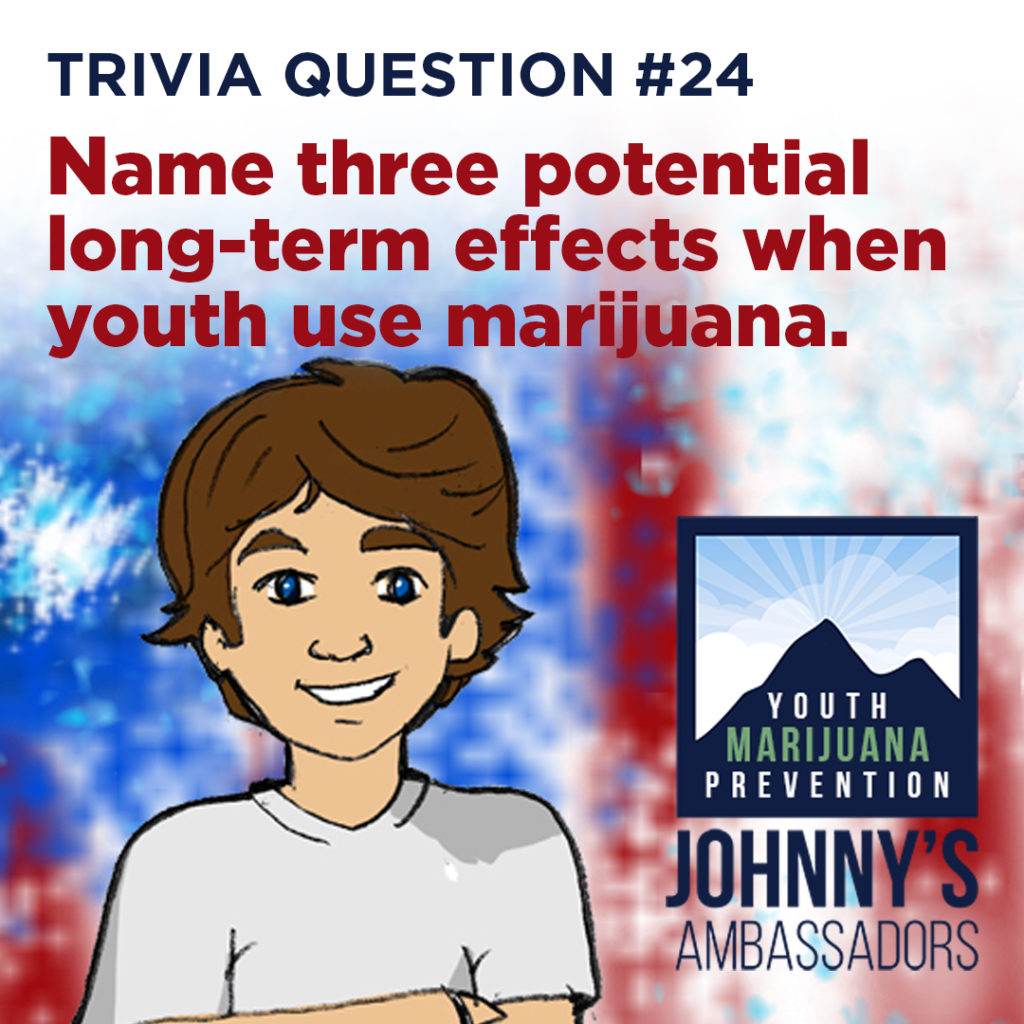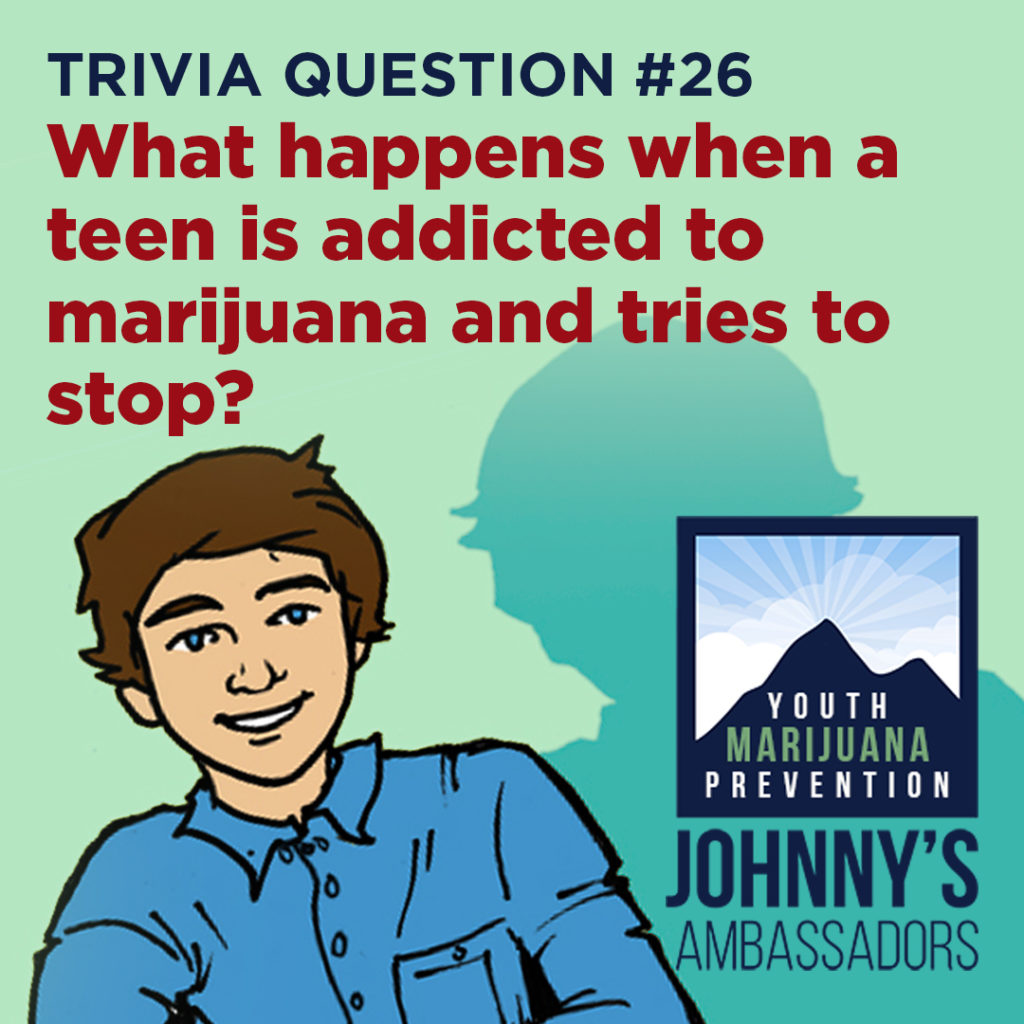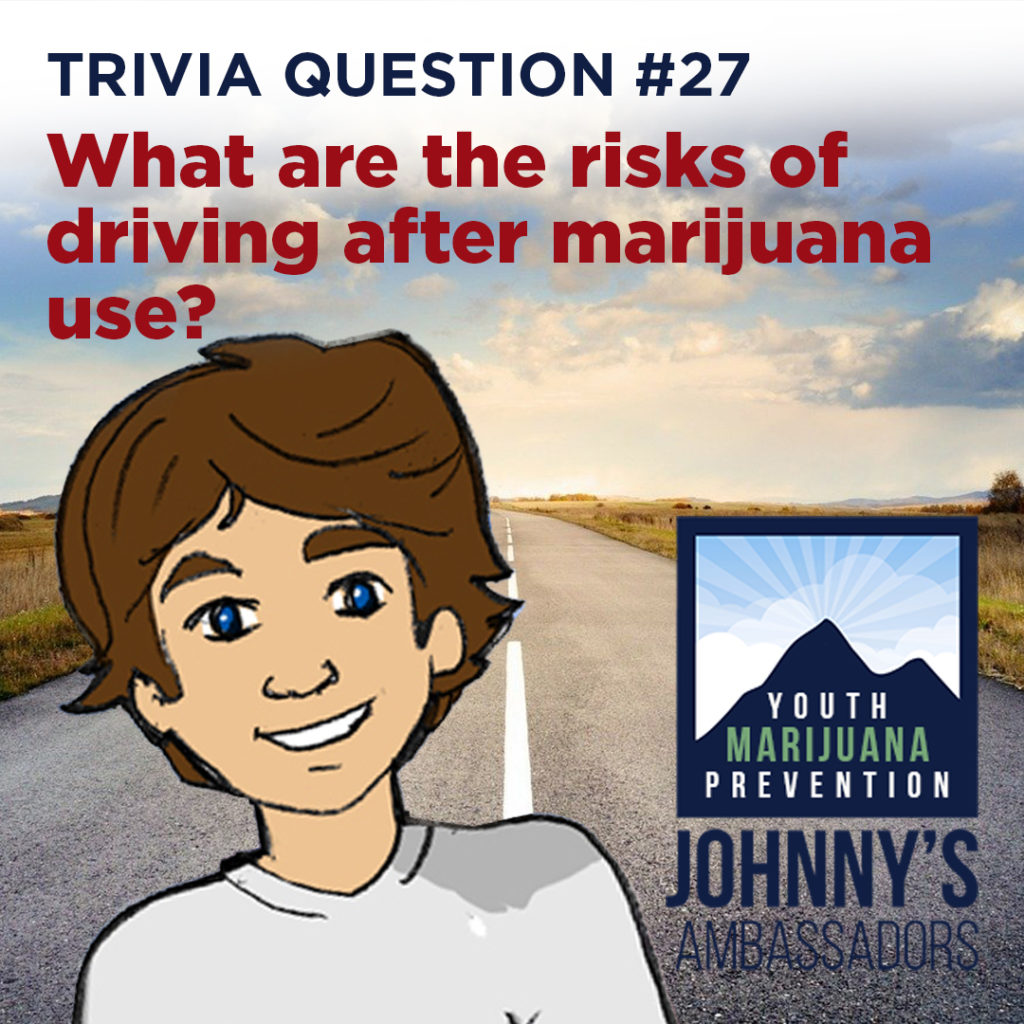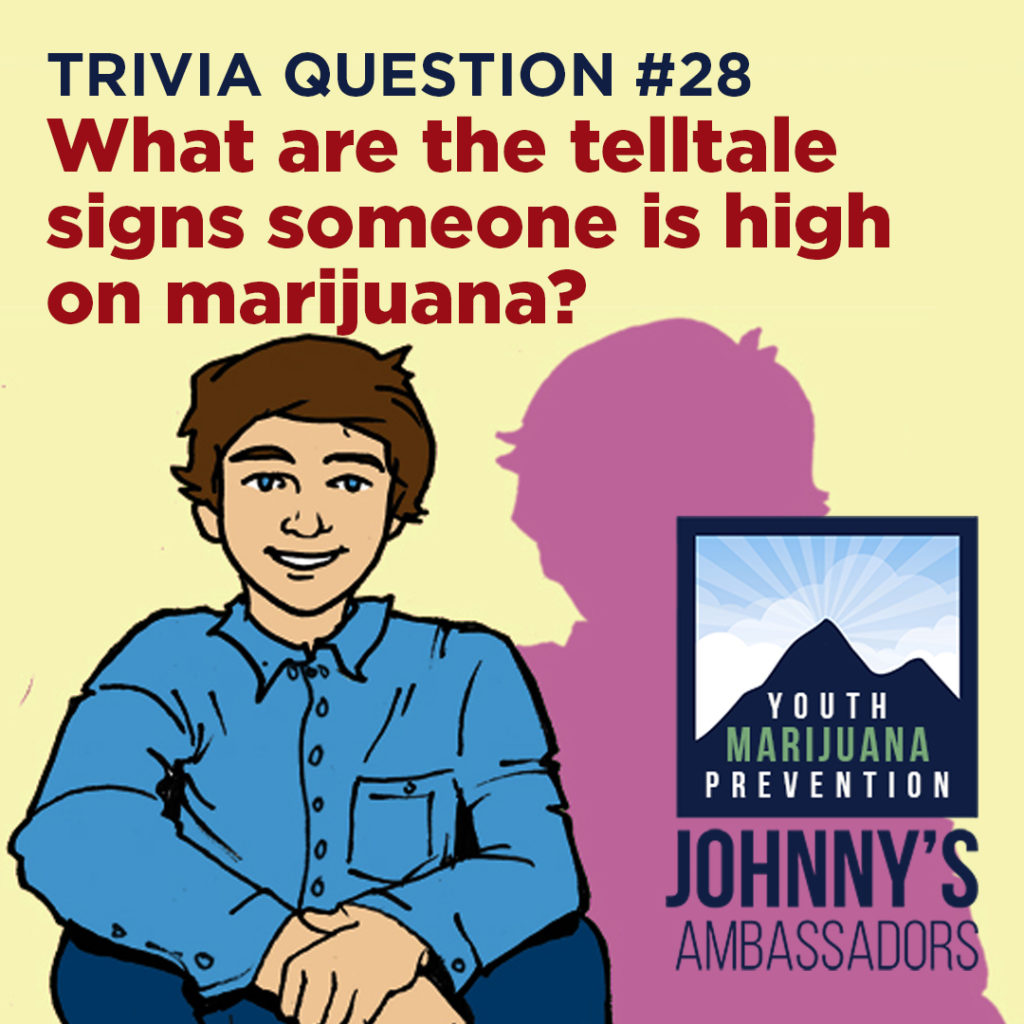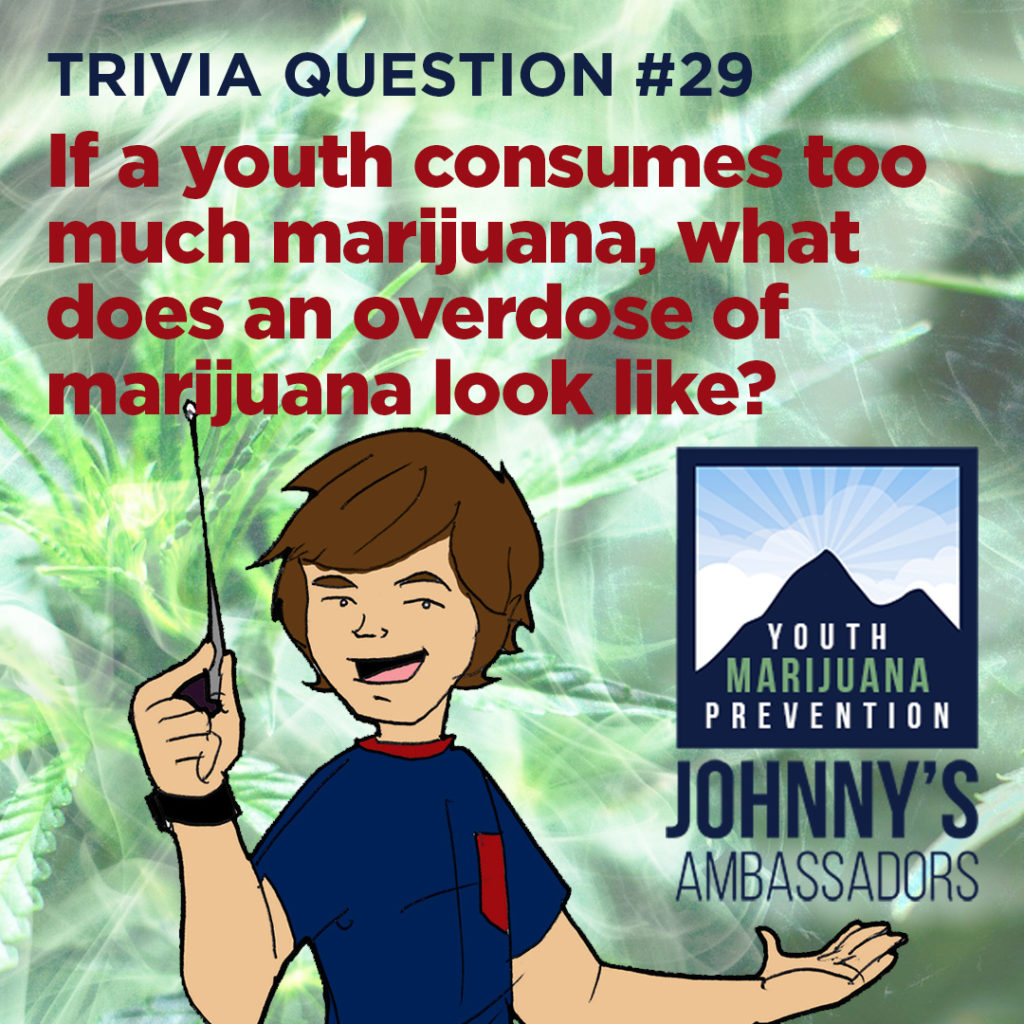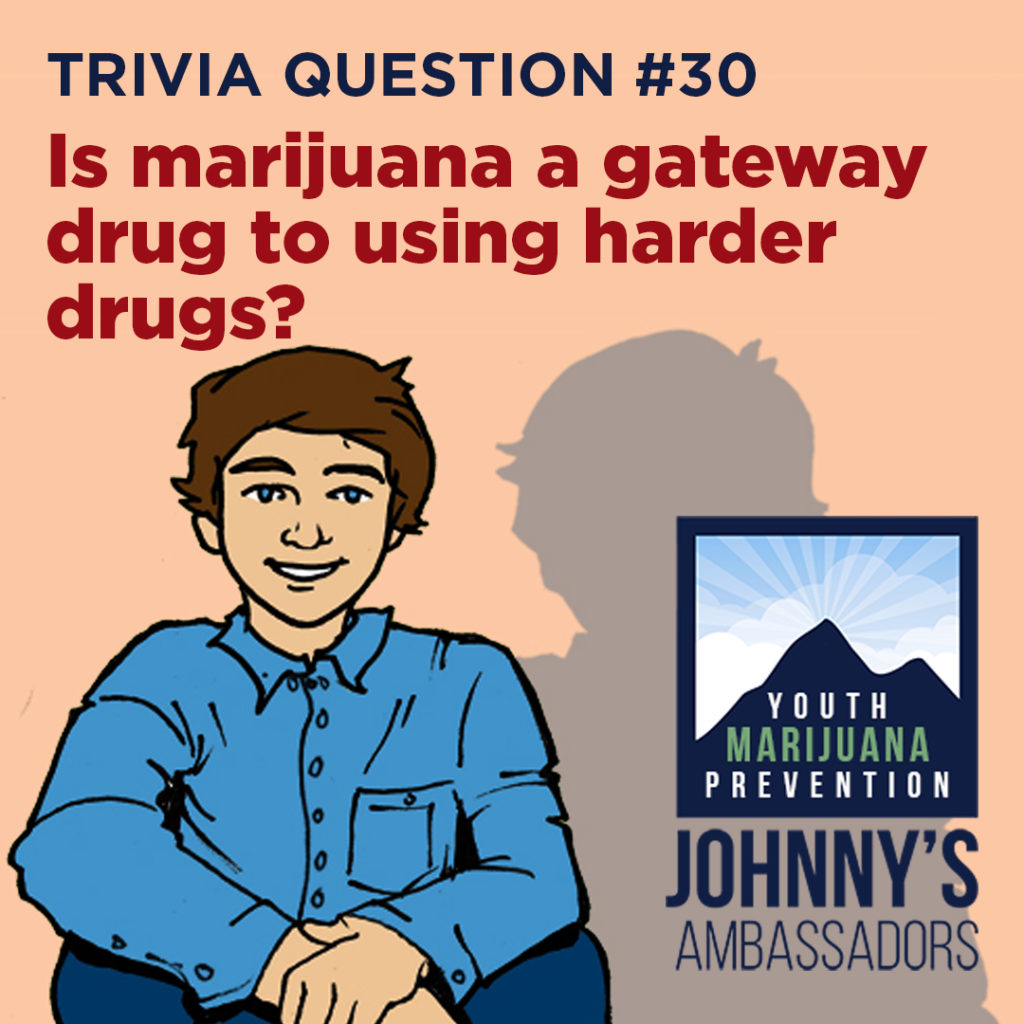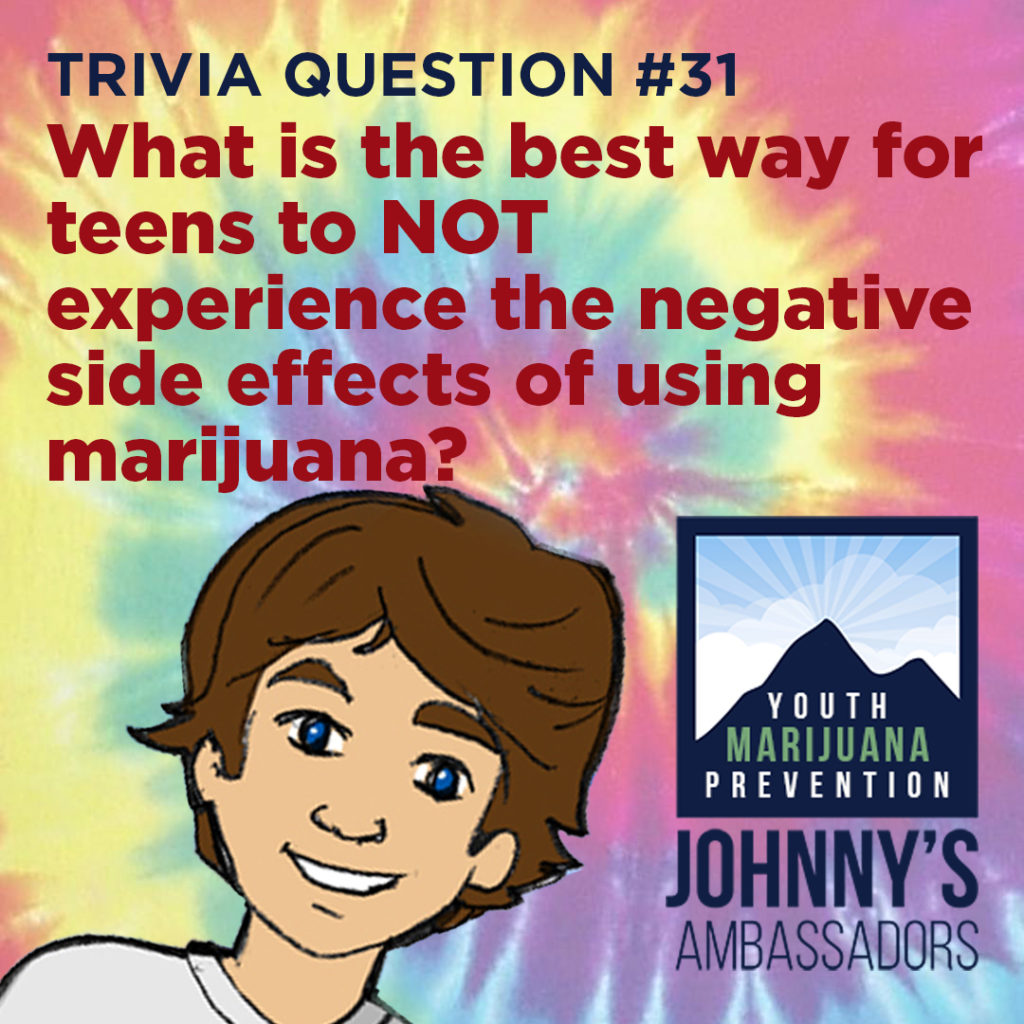Answers:
- Inhaling the vapors from a heated marijuana concentrate such as wax, shatter, or crystalline.
- Cannabinoids are chemicals that occur in the cannabis plant. There are over 80 cannabinoids. Our bodies also produce natural cannabinoids called anandamide and 2-arachidonoylglyerol (2-AG).
- THC, or delta-9-tetrahydrocannabinol, is the psychoactive cannabinoid in marijuana; CBD or cannabidiol is the 2nd most common cannabinoid in the cannabis plant, and it can’t get you high and is possibly a protective factor to balance the THC.
- The THC molecule is similar to the body’s natural endocannabinoid (anandamide). THC enters the bloodstream and binds to CB1 (cannabinoid 1) and CB2 (cannabinoid 2) receptors throughout the brain and body and “tricks” the system into thinking it’s the real thing, thereby blocking the real thing.
- Cannabis is a genus of plant; marijuana is a species of cannabis that has greater than .03% THC; hemp is a species of cannabis that has less than .03% THC (delta 9). Delta 8, 9, and 10 can be derived from either marijuana or hemp.
- The endocannabinoid system (ECS) is a complex cell-signaling system that plays role in regulating a range of functions and processes, including sleep, mood, appetite, memory, reproduction, and fertility. The ECS exists and is active in your body even if you don’t use cannabis, but it is negatively impacted when it interacts with THC.
- Flower is the plant or herb part of the plant (“weed” or “grass”), while concentrates have all plant matter removed through solvents and laboratory processes, so that just the THC remains (the plant matter is discarded). Concentrates are chemicals, not plants, and there is nothing “natural” about them.
- Potency refers to the percentage of THC present in the particular marijuana product (e.g., 28% in flower or 80% in dabs).
- The number of marijuana products available today is staggering! They include flower, concentrates, edibles such as candy and bakery goods, vape/oil, tinctures (flavoring people put on or in food), tampons, suppositories, inhalants, drinks, and more.
- Until the 90s, marijuana averaged between 2-5% THC. Today, due to cultivation for higher and higher levels of THC and lower amounts of CBD, it’s impossible to find marijuana flower in a dispensary lower than 10%, and many near 30% THC (a hard drug is anything over 10% THC). Concentrates weren’t commercialized until after 2010 and range from 60% to 99% potency.
- Most scientists believe the female brain finishes forming at 25, and the male brain can continue formation until 28 or 30.
- The brain forms back to front and bottom to top. THC in the developing brain disrupts its normal development of Synaptogenesis (formation of synapse between neurons in the nervous system); Apoptosis (the controlled pruning of cells as a normal part of growth to allow specialization); and Myelination (the formation of sheaths around pathways to increase efficiency of transmission). MRIs show the cortices of youth who use marijuana before this process is complete have more thinning, meaning parts were pruned they might have wanted to keep.
- 420 Day is a holiday celebrating marijuana. Users smoke marijuana at 4:20 PM on April 20. 710 Day is a holiday celebrating concentrates (on a calculator, 710 spells “OIL” when held upside down). Users dab at 7:10 PM on July 10.
- As early as possible, in an age-appropriate fashion, starting at 5 years old, adding more information at 10, 13, 16, 18, and always.
- Marijuana dependence, decreased IQ, increased risk of addiction with higher potency, increased odds of using other drugs, death from throwing up, more likely to drop out of school, possible psychosis and schizophrenia, decreased fertility rate, lower motivation to do things, possible paranoid and thoughts that others intend to harm you, health damages, poor driving skills.
- Addiction, brain health, increased heart rate, mental illness, poisoning (especially ingesting edibles), increased risk of stroke and heart disease, Heavy cough, chemicals and tar that raise concerns about risk for cancer and lung disease, large airway inflammation, increased airway resistance, lung hyperinflation, chronic bronchitis, respiratory problems, reduction of respiratory system’s immune response, leading to lung infections such as pneumonia, EVALI leading to death, to name some.
- 18 years old (by making up a non-specific diagnosis such as migraines).
- No! Anyone between 18-21 can legally buy shatter in CO from a medical marijuana dispensary with a “red” (medical) card.
- Suicide. In 2018, over 36% of suicides in youth ages 15-19 had THC in their toxicology reports.
- Using marijuana over 10% increases risk of suicide by 7-fold and risk of developing a psychotic disorder by 5-fold.
- HIPPA and POA (Power of Attorney)
- The youth may begin talking about someone being after him/her, people “knowing” about them, get the feeling like someone is watching, or speak otherwise non-sensical, delusional statements. There may also be anger, rage, or violence, so be sure to dial 911 if their safety or yours is at risk.
- Short-term effects include lethargy, impaired coordination and balance, slurred speech, increased heart rate, anxiety, and panic attacks.
- Long-term effects include brain impacts, poor life outcomes, mental health issues, and overdoses.
- Yes, one in six adolescents who use marijuana will become addicted, and one in three who use every day. Cannabis Use Disorder (CUD) is a medical addiction defined in the Diagnostic and Statistical Manual of Mental Disorders, Fifth Edition (DSM-5).
- After cessation of marijuana use that has been heavy and prolonged, Cannabis Withdrawal Syndrome (CWS), which include 3 or more of the following seven symptoms develop within several days after Criterion A: 1) Irritability, anger or aggression, 2) Nervousness or anxiety, 3) Sleep difficulty (insomnia), 4) Decreased appetite or weight loss, 5) Restlessness, 6) Depressed mood, 7) Physical symptoms causing significant discomfort from at least one of the following: stomach pain, shakiness/tremors, sweating, fever, chills, headache. These symptoms cause clinically significant distress or impairment in social, occupational, or other important areas of functioning.
- THC, the intoxicating substance in cannabis, impairs a number of behaviors related to driving, including loss of coordination, decreased ability to weave between lanes, and delayed reaction times.
- Physical signs of marijuana use include red eyes, poor muscle coordination, delayed reaction times, and increased appetite. A sudden shift in mood from tense to relaxed could indicate marijuana use, as could abrupt symptoms of anxiety, panic, and/or hallucinations.
- Here are are the symptoms you may experience if you overdose on weed: High levels of anxiety, panic attack, rapid heart rate, difficulty conversing, poor coordination, high or low blood pressure, nausea and vomiting, extreme confusion and memory problems, paranoia, psychotic episode, and hallucinations. Milder overdoses are typically characterized by nausea, anxiety, lethargy, dizziness, and paranoia.
- Yes, the Centers for Disease Control Youth Risk Behavioral Survey said that lifetime marijuana use is now the #1 predictor of whether a high schooler will have abused opioids in the past 30 days.
- The is never any guarantee that marijuana use is harmless for anyone. There is NO safe level of THC in the developing mind (25 for females and 28-30 for males), so the best way to avoid the negative consequences of marijuana is to never use it.


